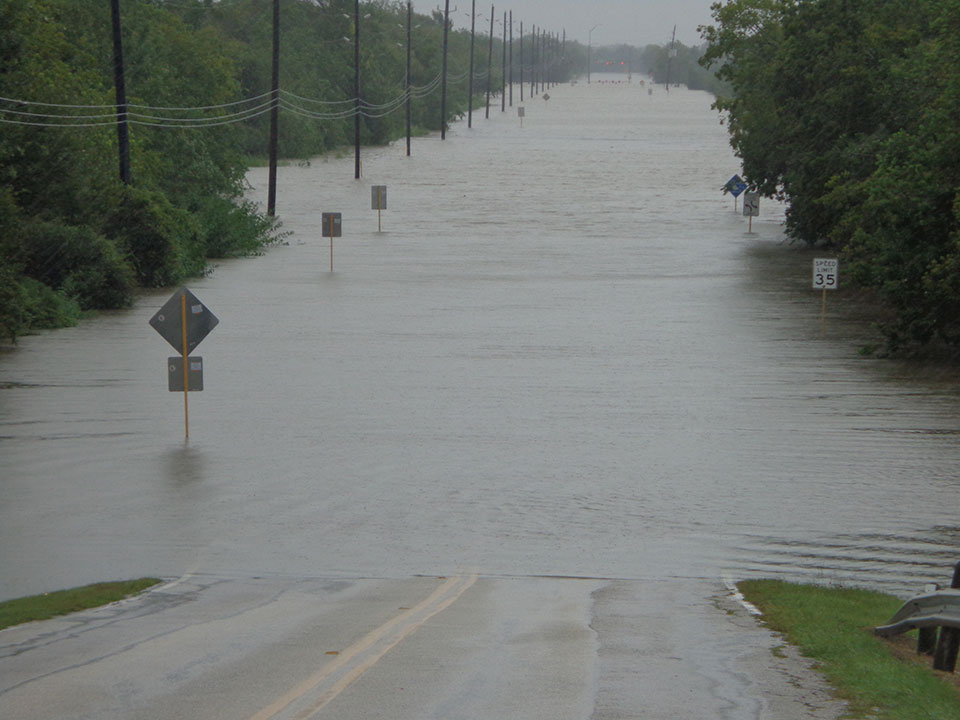Tropical Storm Harvey makes 2nd landfall, now in Louisiana

LAKE CHARLES, La. -- A weakened Tropical Storm Harvey made landfall in southwest Louisiana early Wednesday, leaving residents bracing for more wind, rain and possible tornadoes and hoping water would stay out of their sandbagged homes.
The storm came ashore before dawn just west of Cameron, Louisiana, bringing maximum sustained winds near 45 mph (72 kph), the U.S. National Hurricane Center said. Harvey had lingered over Texas for days before meandering back into the Gulf of Mexico.
Forecasters said there was a risk of tornadoes across a large part of the South as Harvey trudged northeast toward northern Louisiana. The national Storm Prediction Center said a few tornadoes were expected to develop Wednesday in northeast Louisiana and across southern and central portions of Mississippi. Tornadoes would also be possible across parts of southern and central Alabama, near the eastern edge of Harvey's rain bands. At least five tornadoes from Harvey have been confirmed so far in Louisiana, although they have caused little damage.
MORE: More than 13K people rescued, but death toll from Hurricane Harvey rises to 18
Another 1 to 3 inches (2.5 centimeters to 7.5 centimeters) of rain could fall in western Louisiana, with up to 6 inches (15 centimeters) in spots, with the heaviest rain inland.
"We are starting to get down to the end of the tunnel of all this rain," Meteorologist Roger Erickson said.
Harvey appeared to have produced little damage overnight in southwest Louisiana, where hundreds of people were rescued from floodwaters earlier this week, officials said. Harvey's heaviest rains continued to stay west of Louisiana, just across the Sabine River in Texas. Lake Charles recorded less than 1 inch (2.5 centimeters) of rain overnight.
PHOTOS: Historic flooding devastates the Houston area
"We're not out of the woods totally, but we're looking much better," Calcasieu Parish Sheriff Tony Mancuso said
The heaviest overnight rain bands also spared New Orleans, where sun broke through the clouds after daybreak and schools reopened Wednesday after closing a day earlier.
Mayor Mitch Landrieu had urged New Orleans residents to stay home Tuesday because of the threat of potential high water. Some neighborhoods flooded earlier this month during a deluge that exposed problems with the city's pump and drainage system. On Tuesday, rains flooded a few of the city's streets, but not to the same extent.
Erickson, the Lake Charles meteorologist, warned that some coastal rivers won't be able to drain effectively because Harvey's winds are pushing in storm surge, aggravating flooding in areas already drenched by more than 20 inches (51 centimeters) of rain. Gusts up to 40 mph (65 kph) are predicted for coastal areas, although Erickson said Harvey would weaken throughout the day.
Cameron Parish Administrator Ryan Bourriaque said storm surge apparently caused little damage along Louisiana's southwestern coast, although some water remained on roadways in parts of the parish. He said officials are likely to consider lifting a mandatory evacuation order for the southern end of the parish once damage assessments are complete.
"We acknowledge that we are certainly much better off that we could have been at this point," Bourriaque said.
State offices in 28 parishes and most Baton Rouge area schools won't open Wednesday in anticipation of possible severe weather. Gov. John Bel Edwards urged people to remain alert but said the state is responding well to less severe conditions in its own borders.
"You never know what Mother Nature is going to throw at us, but with the people in this room, I'm confident we can handle it," he told local and state officials during a visit Tuesday to Lake Charles, which is near the Texas border.
Edwards said Louisiana also has offered to shelter storm victims from Texas. He said he expects Texas officials to decide within 48 hours whether to accept the offer.
Harvey's devastating flooding brought back tough memories in New Orleans as Tuesday marked the 12th anniversary of Hurricane Katrina. Mayor Mitch Landrieu opened his Tuesday news conference with a moment of silence for Katrina victims and words of support for Harvey's victims in Texas and southwest Louisiana.
"We've got to save our house," New Orleans resident Israel Freeman said as he loaded sandbags for his mother's home into his Cadillac. "She already went through Katrina. She built her house back up. We just had a flood about two, three weeks ago. She just recovered from that."
Bradley Morris lives in a ground-level house in New Orleans and was "preparing for the worst."
"There's plenty of puddling and stuff already," he said, "so I just assume that we're probably going to get a taste of what we had a couple weeks ago."
About 500 people were evacuated in southwest Louisiana's most populous parish early Tuesday, as a heavy band of rain pushed waterways out of their banks, Calcasieu Parish spokesman Tom Hoefer said. He said as many as 5,000 parish residents were affected by the flooding, but not all of those people have flooded homes. Some are just cut off by flooded roads.
Family members and authorities in Texas have reported at least 18 deaths from the storm. No Harvey-related deaths were immediately reported in Louisiana, according to a spokesman for Edwards.















































































































































































